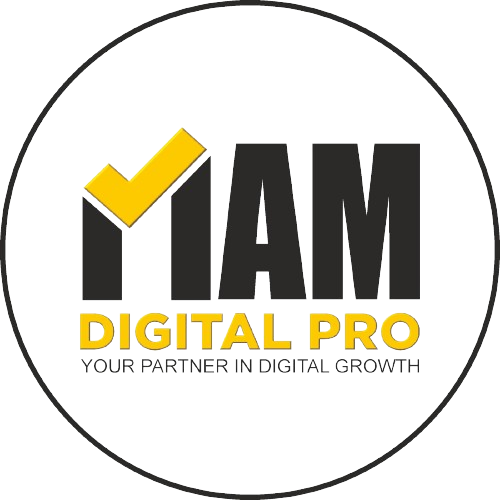Social media marketing is essential to any brand’s success in today’s digital landscape. However, many marketing teams need help determining their social efforts’ impact and return on investment.
Properly tracking and measuring your social media performance is crucial for understanding what’s working, what’s not, and how to optimize your strategy. In this post, we’ll explore the key social media metrics to focus on, analytics platforms to leverage, and ways to connect your efforts to overarching business goals.
Key Social Media Performance Indicators to Track
When developing your social media tracking and analytics framework, there are a few key performance indicators (KPIs) that deserve your attention:
- Follower Growth
One of the most straightforward metrics to track is your number of followers on each social platform over time. Consistent follower growth indicates that your content and community engagement tactics effectively drive interest. Benchmark follower counts at the beginning of campaigns or initiatives, then compare them to current numbers to identify growth rates.
For example, if you had 1000 Twitter followers at the start of the month and have gained 100 new followers in the past three weeks, you have a 10% monthly growth rate.
2. Engagement Rate
Engagement rate is a crucial metric that measures how well your content resonates with your audience. Count the total number of actions on your posts, such as likes, comments, clicks, shares, retweets, etc. Then, divide that by your total number of followers.
It shows what percentage of your audience is actively engaging with your content. If your Facebook Page has 10,000 followers, and your posts average 500 reactions and comments per post, your engagement rate is 5%.
3. Click-Through Rate
For links and calls-to-action you include in social posts, click-through rate (CTR) is an important metric. It shows how many people clicked your link or CTA button out of the total post views.
For example, you shared a link to a blog post that received 300 post views. 100 people clicked the link in the post. That’s a CTR of 33%. High CTRs indicate your content topics and headlines are resonating.
4. Mentions and Hashtag Tracking
Monitoring brand mentions, hashtags, and keywords provides insight into social listening and Brand awareness. Use social listening tools to track increases or decreases in people mentioning your brand name, handle, or branded hashtags on social networks.
More mentions generally signal growing brand awareness and interest in your content. Tracking relevant hashtags also allows you to join more extensive conversations and connect with new audiences already discussing your industry.
5. Lead Generation Metrics
To connect social efforts to concrete business results, track traffic to your website driven by social platforms and any resulting conversions. Install UTM builder links in your social bios and posts to label traffic from Facebook, Instagram, Twitter, etc.
Once labeled, use Google Analytics to monitor which social channels drive the most traffic and highest conversion rates on lead generation goals like email sign-ups, content downloads, and purchases.
Analytics Platforms for In-Depth Measurement of Social Media Performance
While those metrics provide a high-level snapshot, you’ll want to dig deeper into network-specific analytics platforms for additional data.
- Facebook Insights
Facebook Insights should be your go-to analytics source for your Facebook Page and ad campaigns. Dive into stats like:
- Post reach and engagement over time
- Audience demographic and geographic data
- Traffic sources driving Page views
- Ad performance, including cost-per-click and conversion tracking
Regularly analyze Insights reports to identify best posting days/times, underperforming content, audience trends, and optimization opportunities.
2. Instagram Insights
Similarly, utilize Instagram Insights for metrics on your Instagram profile and Stories—track growth in followers and engagement rates. Evaluate performance by gender, age range, location, and time of day.
Monitor which types of posts and Stories resonate best. Check traffic sources to your bio link. All these Insights demonstrate what your Instagram audience responds to most.
3. Twitter Analytics
The built-in Analytics dashboard for Twitter (Now “X”) accounts provides core metrics like tweet impressions, engagements, clicks, retweets, profile visits, and new followers. Monitor tweet performance over time, and use the data to shape content strategy.
Audience insights around follower interests, behaviors, and demographics are also available to optimize targeting and inform future campaigns.
4. Google Analytics
With Google Analytics, you can monitor website traffic and conversions from all social platforms. Connect your Analytics account to track visitor acquisition channels properly.
Key metrics to analyze include social traffic volume, sources, landing pages, bounce rates, pages per session, goal completions, and conversion rates. Use the data to quantify ROI and double down on high-converting channels.
Tie Metrics to Business Goals
While the metrics above provide valuable insights, the data doesn’t necessarily demonstrate the business impact you’re driving. The key is explicitly connecting social KPIs to your goals around:
- Sales revenue generated
- Brand awareness lifted
- Lead generation increased
- Customer engagement improved
Consistently analyze performance against these targets. For example, if you run a social ad campaign to increase whitepaper downloads by 25%, track both the number of ad clicks from social and the number of whitepaper downloads. Calculate incremental lift explicitly generated by the social effort. It ties activity back to tangible business results, demonstrating the value generated by your social media presence.
Tools to Compile Data Across Networks
Manually compiling analytics across multiple social platforms can take time and effort. Luckily, many tools exist to automatically aggregate and visualize all your critical metrics in one place.
- Hootsuite
Hootsuite offers an integrated social media management platform with analytics and reporting capabilities. Connect social profiles to access comprehensive data and insights into audience demographics, engagement, content performance, and more.
2. Sprout Social
Sprout Social is another end-to-end social media management solution containing powerful analytics tools. Track and compare performance across multiple networks. Custom reporting and scheduled reports ensure metrics are readily accessible.
3. Google Data Studio
For free marketing data visualization, Google Data Studio connects to various data sources like Google Analytics, Facebook Insights, Twitter, and more. Import your social metrics to create customized dashboards tracking cross-platform performance.
Key Takeaways
In summary, properly tracking and measuring social media efforts is crucial for companies looking to improve their performance. Focus on critical engagement, traffic, and conversion metrics. Leverage built-in social analytics platforms for deeper analysis. Tie activity back to overarching business goals. Use aggregation tools to compile cross-channel data.
Consistent measurement and optimization of your social media strategy based on performance metrics allows you to maximize ROI and contribute significant business impact through your social presence.
FAQs
Q 1 . How do I track my social media performance?
You can track your social media performance by looking at key metrics like engagement rate, click-through rate, follower growth, mentions, lead generation, and more. Use the built-in analytics tools within each social platform, like Facebook Insights and Twitter Analytics, to monitor post and account performance. You can also use third-party social media analytics tools like Hootsuite, Sprout Social, and Google Analytics to get a cross-channel view.
Q 2. How do you measure social media use?
The use of social media can be measured by metrics such as post reach, engagement rate, clicks, impressions, audience growth, demographics, and traffic driven to your website from social media. Facebook Insights, Twitter Analytics, and Instagram Insights provide data on how people interact with your profiles and content, demonstrating social media use.
Q 3. How would you measure the performance of social media campaigns & efforts?
To measure the performance of specific social media campaigns, begin by identifying your goals and KPIs for the campaign, such as reach, engagement rate, conversions, etc. Establish baseline metrics before launch. Track the performance of individual posts using UTMs and links to track traffic, leads, and sales. Calculate engagement rate. Monitor the use of branded hashtags or mentions. Compare campaign metrics to your benchmarks to identify the lift generated.
Q 4. How do you measure KPI in social media?
Social media KPIs can be measured by tracking engagement rate, follower growth rate, click-through rate, conversions from social posts, number of mentions, reach, impressions, etc. Each platform provides analytics to track these KPIs for individual posts and your overall account. Third-party analytics tools can compile data across channels. Regularly monitor KPIs against goals and optimize your social strategy accordingly.
Q 5. What are some key social media metrics I should be tracking?
Some of the most important social media metrics to track include engagement rate, follower growth, click-through rate, lead generation, conversions, impressions, and reach sentiment and mentions. Monitoring these KPIs will give you a well-rounded view of your social media efforts.
Q 6. How can I demonstrate the business value generated by social media?
Connect your social media metrics to overarching sales, revenue, lead generation, and customer engagement goals to demonstrate business value. For example, tracking social media referred website traffic and correlating conversion rates. This quantifies how social drives accurate business results.
7. What free tools can I use to monitor social media analytics?
Many free tools are available, like built-in analytics within each social media platform (Facebook Insights, Twitter Analytics, etc.), Google Analytics, Hootsuite’s free plan, Cyfe, Sprout Social’s free tools, Keyhole, and more. These provide vital metrics across multiple networks.
Q 8. Should I track social media daily, weekly, or monthly?
Experts recommend tracking weekly or monthly for most standard metrics, as daily fluctuations may not be meaningful. However, analyze individual posts’ performance within the first few days. Monitor daily for time-sensitive data like campaign hashtag use or upticks in mentions.
Q 9 . How can I track engagement across multiple social profiles?
Social media management and analytics platforms like Hootsuite, Sprout Social, and Brandwatch allow you to connect multiple profiles and track engagement data, like likes, comments, shares, etc., in one centralized dashboard. This streamlines cross-channel tracking.
Q 10. How do you measure social media performance?
Social media performance is primarily measured through data and analytics. Key quantitative metrics include engagement rates, reach, website traffic, conversions, follower growth, click-through rates, shares, hashtag usage, brand mentions, and sentiment. Platform analytics, third-party tools, and UTM campaign tracking provide the data.
Q 11. What are the 5 key performance indicators for social media?
The 5 most important social media KPIs are:
- Engagement rate
- Audience growth
- Click-through rate
- Lead generation/conversions
- Brand mentions and awareness
Monitoring these factors provides a well-rounded view of social efforts.
Q 12. How do you analyze social media content performance?
Analyze content performance by looking at metrics like reach, clicks, engagement rate, shares, comments, saves, and reactions for each post. Compare types of content, messaging, formats, timing, keywords, etc., to identify trends in what resonates best with your audience. Tie back to goals around awareness, traffic, leads, and engagement.
Facebook
Twitter
LinkedIn


It is fruitful information. Thank you